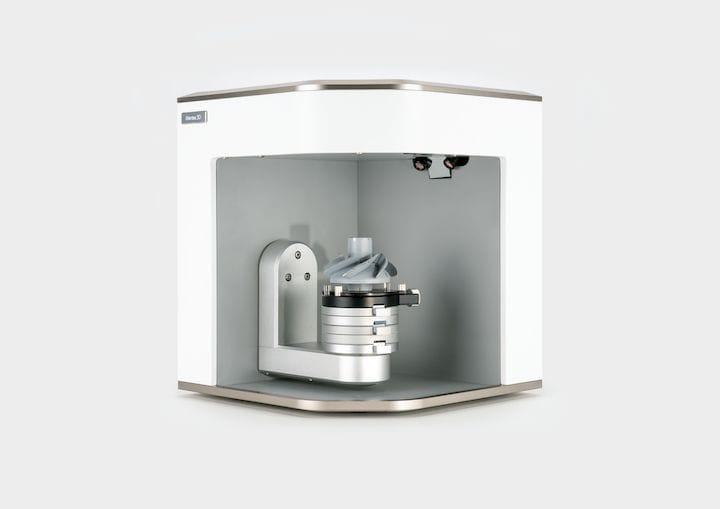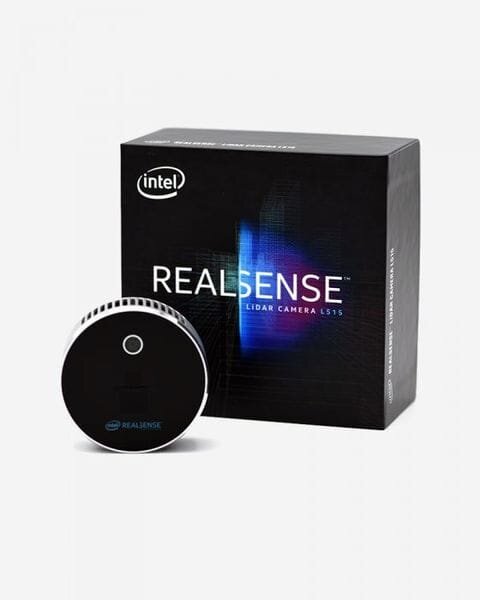![The new Artec Micro high-resolution desktop 3D scanner [Source: Artec 3D]](https://fabbaloo.com/wp-content/uploads/2020/05/artec-micro-ov_result_img_5eb098061d842.jpg)
Artec 3D announced the Micro, a new desktop 3D scanning system.
This is a bit of a departure for the company, which otherwise has produced only handheld 3D scanners — with one exception, the “Ray”, which is a tripod-mounted device for capturing large architectural spaces.
Artec 3D’s Eva, Spider and Leo devices are all well-regarded, and carry reasonable prices for the high-end 3D scanner market. Their software, Artec Studio, is quite powerful and easy to use, and appears on all of their products.
But now they’ve announced something completely different: a high-resolution 3D scanner that is definitely not handheld nor tripod-mounted! The Micro is a desktop device.
There are two claims to fame for this device.
![A 3D scanning operator enjoying the ease-of-use features of the Artec 3D Micro 3D scanner [Source: Artec 3D]](https://fabbaloo.com/wp-content/uploads/2020/05/artec-micro-on-table_result_img_5eb09806750b8.jpg)
The second claim to fame is ease of use. Artec 3D has designed the Micro to be usable with minimal effort by anyone. They explain:
“Artec Micro offers a sleek, compact design. Users of all skill levels can learn to operate the technology in minutes, and initiating a scan takes only a few easy steps. Intuitive and easy-to-use, Artec Micro requires minimal training, allowing almost anyone to place an object on the scanning plate and begin scanning immediately. After an object is placed on the circular scanning platform, the operator simply chooses from a variety of smart scanning paths and clicks to begin. The scanning process can be viewed in real-time within Artec Studio.”
The 3D scanning process used by the Micro appears to be a form of photogrammetry, as twin cameras are employed in the device. Unlike most desktop 3D scanners that sport a simple rotational turntable, the Micro’s motion system operates in two axes. Artec 3D says the Micro includes two blue LED lights that are synchronized with the dual-axis turntable motors.
![The Artec Micro 3D scanner includes a dual-axis system [Source: Artec 3D]](https://fabbaloo.com/wp-content/uploads/2020/05/image-asset_img_5eb09806bcd00.jpg)
This is quite interesting, as it suggests the software will know the precise orientation of each captured image automatically, unlike standard photogrammetry systems that depend on patterned layouts or, shudder, random backgrounds.
I suspect this gadgetry is what enables Artec 3D to achieve such a high resolution with the Micro.
We’re told that the new Micro will be priced at US$29,300, a price higher than some desktop 3D scanners, but this is a device of another level of capability.
But who will use the Micro? It seems that Artec 3D is targeting the device at jewelers, based on the material we’ve seen so far.
This is quite interesting, as I’ve often wondered what a good use case for desktop 3D scanners could be. I’ve tried several, and have largely been disappointed with the results. The resolution is usually insufficient for anything other than casual scanning.
But with the Micro, Artec 3D may be onto something: the resolution may be high enough that jewelers could make more use of a desktop 3D scanning system. They could, for example, 3D scan an existing jewelry item, and then reproduce it. They could design an item by hand using conventional techniques and then 3D scan it for producing many copies.
Another interesting use case might be for recovery: imagine if your jeweler could 3D scan your unique item and store the 3D model. Then if you happen to lose or damage the piece, the jeweler could recall the 3D scan and reproduce it.
Well, they cannot reproduce the sentimental value of an original item, but hey, this is as good as it can get!
Via Artec 3D











